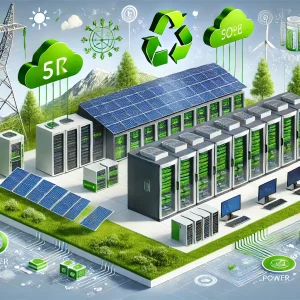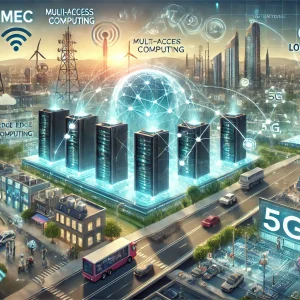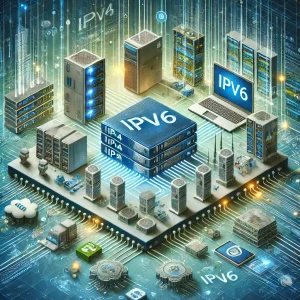
In today’s rapidly evolving digital world, the concept of sustainability has permeated various industries, and networking is no exception. Sustainable networking, particularly through the adoption of energy-efficient technologies and practices, is becoming increasingly crucial. This approach not only helps in reducing the carbon footprint but also enhances the overall efficiency and longevity of networking infrastructure. This blog will explore the importance of sustainable networking, the technologies driving energy efficiency, and the best practices for implementing these solutions.
The Importance of Sustainable Networking
Networking technologies form the backbone of our digital society, enabling everything from personal communication to global business operations. However, the energy consumption associated with these technologies is significant. Data centers, network devices, and other related infrastructure contribute substantially to global energy usage. According to a report by the International Energy Agency, data centers alone account for about 1% of the world’s electricity consumption, a figure that is expected to grow with the increasing demand for digital services.
Adopting sustainable networking practices is essential for several reasons:
- Environmental Impact: Reducing energy consumption directly translates to lower greenhouse gas emissions. By adopting energy-efficient technologies, companies can significantly decrease their environmental impact.
- Cost Savings: Energy-efficient networking can lead to substantial cost savings. Lower energy consumption reduces operational costs, allowing businesses to allocate resources to other critical areas.
- Regulatory Compliance: With growing awareness about climate change, many governments are introducing regulations aimed at reducing energy consumption and promoting sustainability. Adhering to these regulations not only ensures compliance but also enhances the company’s reputation.
- Corporate Social Responsibility (CSR): Embracing sustainable networking practices is increasingly seen as a mark of corporate responsibility. It enhances the brand image and meets the expectations of consumers and investors who prioritize environmental stewardship.
Technologies Driving Sustainable Networking
The shift towards sustainable networking is being driven by various innovative technologies designed to enhance energy efficiency. Some of these technologies include:
- Energy-Efficient Ethernet (EEE): EEE, also known as IEEE 802.3az, is a standard that allows Ethernet interfaces to reduce power consumption during periods of low data activity. It dynamically adjusts the power usage of network devices, reducing energy consumption without compromising performance.
- Software-Defined Networking (SDN): SDN separates the network control plane from the data plane, allowing for more efficient network management and optimization. By dynamically adjusting network resources based on demand, SDN can significantly reduce energy consumption.
- Network Function Virtualization (NFV): NFV decouples network functions from proprietary hardware appliances, allowing them to run on standard servers. This virtualization reduces the need for specialized hardware, leading to lower energy consumption and improved resource utilization.
- Green Data Centers: Modern data centers are designed with energy efficiency in mind. Techniques such as free cooling, advanced power management, and renewable energy integration help in reducing the overall energy footprint of data centers.
- Optical Networking: Optical networks use light to transmit data, offering higher bandwidth and lower energy consumption compared to traditional copper-based networks. Technologies like Dense Wavelength Division Multiplexing (DWDM) further enhance the efficiency of optical networks.
- IoT and Edge Computing: The proliferation of Internet of Things (IoT) devices and edge computing can help in reducing the load on central data centers. By processing data closer to the source, these technologies minimize the energy required for data transmission and processing.
Best Practices for Implementing Sustainable Networking Solutions
Adopting energy-efficient networking technologies is a critical step, but implementing these solutions effectively requires careful planning and execution. Here are some best practices to consider:
- Energy Audits and Assessments: Conduct regular energy audits to identify areas where energy consumption can be reduced. Assess the current state of the network infrastructure and prioritize upgrades based on potential energy savings.
- Network Optimization: Optimize network design and architecture to minimize energy usage. This includes consolidating network devices, eliminating redundant equipment, and optimizing data flow to reduce unnecessary energy consumption.
- Efficient Cooling Solutions: Implement efficient cooling solutions in data centers and network facilities. Techniques such as hot and cold aisle containment, liquid cooling, and using outside air for cooling can significantly reduce energy consumption.
- Power Management: Utilize advanced power management features in network devices. Enable power-saving modes during periods of low activity and schedule power-intensive tasks during off-peak hours.
- Renewable Energy Integration: Where possible, integrate renewable energy sources such as solar or wind power into the network infrastructure. This not only reduces reliance on fossil fuels but also promotes sustainability.
- Employee Training and Awareness: Educate employees about the importance of energy efficiency and sustainability. Encourage practices such as turning off unused equipment and optimizing device settings for lower energy consumption.
- Lifecycle Management: Implement lifecycle management for network equipment. This includes regular maintenance, timely upgrades, and proper disposal of outdated devices to minimize energy waste.
- Monitoring and Reporting: Establish robust monitoring and reporting mechanisms to track energy consumption. Use this data to identify trends, set benchmarks, and make informed decisions about energy efficiency initiatives.
Case Studies and Success Stories
To illustrate the impact of sustainable networking, let’s look at a few case studies:
- Google’s Data Centers: Google has been a pioneer in designing energy-efficient data centers. By implementing advanced cooling techniques, utilizing AI for energy management, and investing in renewable energy, Google has achieved a Power Usage Effectiveness (PUE) of 1.12, significantly lower than the industry average.
- Facebook’s Open Compute Project: Facebook’s Open Compute Project focuses on designing and sharing efficient hardware designs for data centers. By open-sourcing their designs, Facebook has encouraged the adoption of energy-efficient practices across the industry, leading to significant reductions in energy consumption.
- AT&T’s Network Optimization: AT&T has implemented various sustainable networking solutions, including SDN and NFV. These technologies have enabled AT&T to reduce energy consumption by optimizing network resource allocation and minimizing the need for physical hardware.
The Future of Sustainable Networking
The future of sustainable networking looks promising, with continuous advancements in technology and growing awareness about the importance of energy efficiency. Some emerging trends that are likely to shape the future include:
- AI and Machine Learning: AI and machine learning algorithms can be used to predict network demand, optimize resource allocation, and identify energy-saving opportunities in real-time.
- 5G and Beyond: The rollout of 5G networks promises higher speeds and lower latency, but also presents challenges in terms of energy consumption. Innovations in energy-efficient 5G technologies and infrastructure will be crucial in ensuring sustainability.
- Quantum Networking: Quantum networking, which leverages the principles of quantum mechanics, has the potential to revolutionize data transmission with minimal energy consumption. While still in the experimental stage, this technology holds great promise for the future.
- Blockchain for Energy Management: Blockchain technology can be used to create transparent and efficient energy trading systems, enabling better management of renewable energy sources and reducing wastage.
- Green Certifications: The adoption of green certifications for network infrastructure, similar to LEED for buildings, can drive the industry towards more sustainable practices. These certifications can serve as benchmarks for energy efficiency and sustainability.
Conclusion
Sustainable networking, with a focus on energy-efficient technologies and practices, is not just an environmental imperative but also a business necessity. By reducing energy consumption, companies can lower operational costs, comply with regulations, and enhance their corporate image. The adoption of innovative technologies such as EEE, SDN, NFV, and green data centers, along with best practices for implementation, can significantly contribute to a more sustainable future. As we move forward, continuous advancements and a collective effort towards sustainability will be key to securing the future of networking. Sustainable networking is not just a trend but a vital step towards a greener, more efficient digital world.





